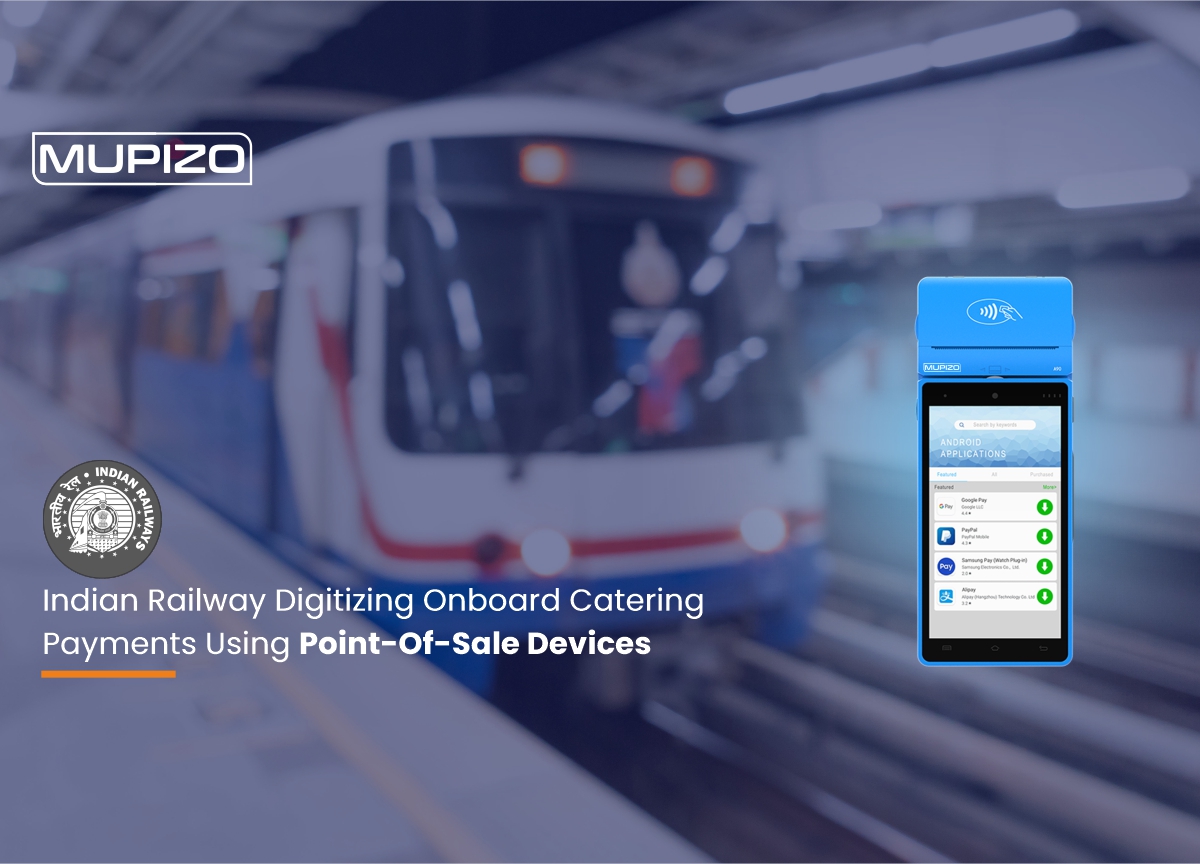Indian Railway Digitizing Onboard Catering Payments Using Point-Of-Sale Devices

Indian railway ramping up digitalizing, IRCTC's new catering norms promote Point-Of-Sale devices for catering services inside trains. The railway has officially stated that POS machines have already been installed on 596 trains, totaling 3081 POS devices. The POS devices used in the station restaurants should be included in the figures. Every day, the device alone serves 42,000 meals which equates to 1775 services at 310 stations. Railways introduced this movement for passenger and employee convenience.
POS devices changing the face of catering service
Price variation for meals in trains has been a long-standing problem before railways in ensuring better customer services. As complaints are stacking up, the railway can ensure the charges are unified and consolidated with the new POS system. Passengers will have the satisfaction of paying the right price and can avoid unwanted talks. Additionally, passengers can utilize various payment methods a POS offer at their convenience and comfort digital payment that don't require people to keep money in their pocket. The system will also allow better monitoring of cash flow and track sales performance.
Indian railway has already been training catering staff to use POS devices. The plan is to deploy two POS per rake to provide efficient service by ensuring the advent of technology reaches every passenger. Another significant issue that the system will address is transparency in food supply and transaction accountability. Without a doubt, the system can greatly improve order acceptance and food distribution processes.
As a part of the government's plan to make India a cashless society, railway passengers can now pay for food items and beverages onboard trains using Point-of-Sale devices. This technology is an important step towards a cashless society as it will help reduce the quantum of currency transactions in trains.
What's next?
Obviously, the Point-Of-Sale system will soon be deployed in all trains. Besides, there are multiple ways POS could be used in trains, for example, to verify tickets and charting checking for TTs. Indian railway is also planning to use pocket POS devices for TTEs so they can use them to accept payment for Excess Fare Ticket (EFT) through PGPRS POS Machine by Onboard TC Staff. The railways have already provided handheld devices to TCs servicing top express trains.
Conclusion:
This technology is a significant step toward a cashless society and transparent train services. It will aid the Indian Railways in their goal of becoming entirely cashless. The use of Point-of-Sale devices on trains will also reduce the quantum of currency transactions, which will help track sales performance and improve cash flow management procedures. And, eventually, enables a cashless train journey.